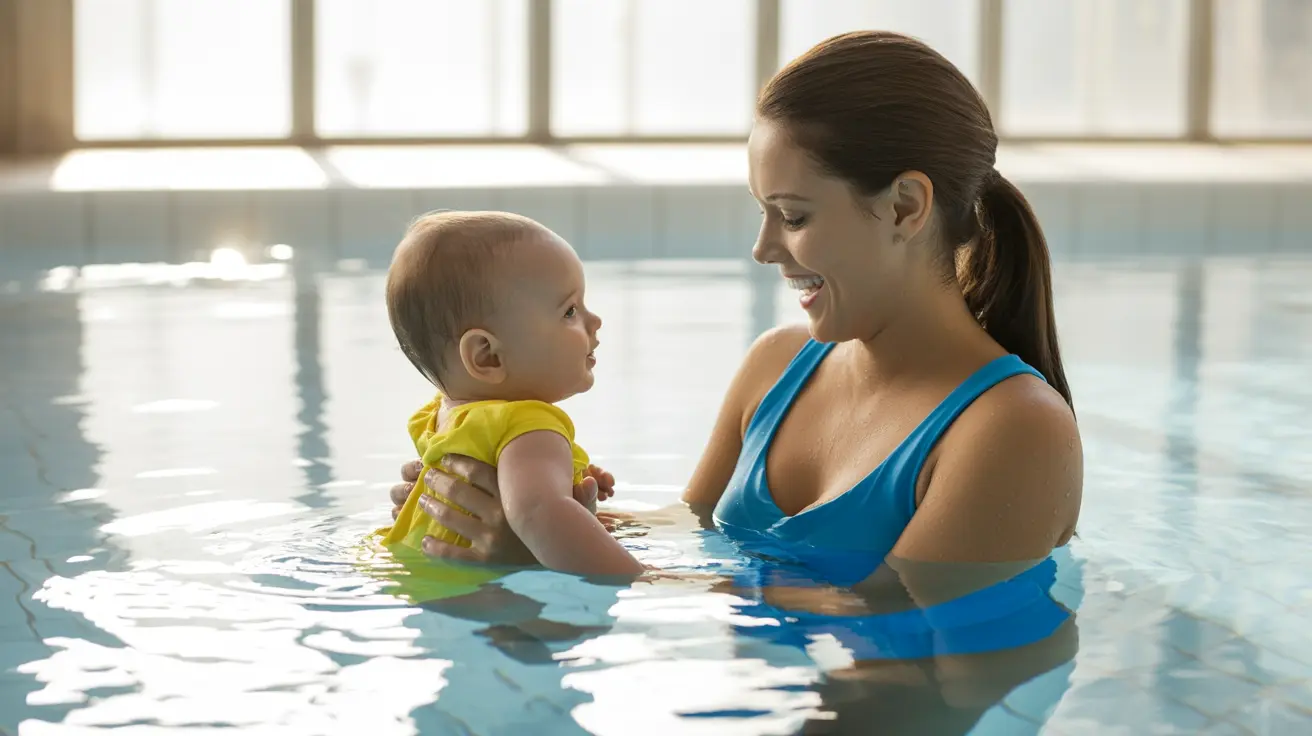Introducing your baby to swimming can be an exciting milestone in their development, offering benefits ranging from water safety awareness to enhanced physical coordination. As a parent, understanding when and how to start swimming activities with your infant is crucial for both safety and enjoyment.
This comprehensive guide will walk you through everything you need to know about swimming for babies, including safety measures, recommended age to start, and essential equipment to make the experience positive for both you and your little one.
When to Start Swimming Activities with Your Baby
Many parents are eager to introduce their babies to water, but timing is crucial. While babies can start getting familiar with water during bath time from birth, structured water activities typically begin around 6 months of age. However, several factors should be considered before starting:
- Baby has good head control
- Immunizations are up to date
- Water and air temperatures are appropriate
- Your pediatrician has given approval
Pool Temperature and Environment Considerations
The swimming environment needs to be carefully controlled for babies:
- Water temperature should be 89-94°F (32-34°C)
- Pool area should be clean and well-maintained
- Indoor pools are preferable for beginners
- Sessions should be limited to 20-30 minutes
Essential Safety Precautions for Baby Swimming
Safety should always be the top priority when introducing babies to swimming. Here are crucial safety measures to follow:
Before Getting in the Water
- Never leave your baby unattended near water
- Ensure proper swim diaper usage
- Check water temperature
- Have all necessary equipment ready
During Water Activities
Maintain constant physical contact with your baby and follow these guidelines:
- Keep your baby's head above water
- Watch for signs of fatigue or discomfort
- Take regular breaks
- Maintain constant supervision
- Stay within arm's reach at all times
Recommended Equipment for Baby Swimming
Having the right gear makes swimming safer and more enjoyable for babies:
- Swim diapers (both disposable and reusable options)
- Baby wetsuit or warm water suit
- Non-slip swim shoes
- Soft, absorbent towels
- Waterproof toys
- Swimming aids appropriate for age
Activities to Introduce Babies to Swimming
Start with simple, age-appropriate activities to build water confidence:
- Gentle bouncing in the water
- Supervised floating with support
- Blowing bubbles
- Singing songs during water play
- Using floating toys for engagement
Frequently Asked Questions
When is it safe to start taking my baby swimming?
Babies can typically start swimming activities around 6 months old, once they have good head control and their initial immunizations are complete. However, always consult with your pediatrician first for personalized guidance based on your baby's development.
What safety precautions should I follow while swimming with my baby?
Essential safety precautions include maintaining constant physical contact, ensuring proper water temperature, using appropriate swim diapers, never leaving your baby unattended, and limiting swim sessions to 20-30 minutes. Always stay within arm's reach and watch for signs of fatigue or distress.
Are formal swim lessons recommended for babies under 12 months old?
While formal swim lessons can be started as early as 6 months, they should focus on water familiarity and parent-child bonding rather than actual swimming techniques. The American Academy of Pediatrics supports swimming lessons for children 1 year and older as part of a comprehensive drowning prevention strategy.
How can I prevent drowning accidents during infant water play or bath time?
Prevention includes constant adult supervision, maintaining physical contact, using proper safety equipment, never leaving water in baby pools unattended, and ensuring proper barriers around home pools. During bath time, never leave your baby unattended, even for a moment.
What types of activities and gear are best for introducing babies to swimming?
Start with gentle activities like supported floating, slow bouncing in the water, and playing with waterproof toys. Essential gear includes properly fitting swim diapers, warm water suits, and age-appropriate floating devices. Choose activities that promote confidence and enjoyment while maintaining safety.




